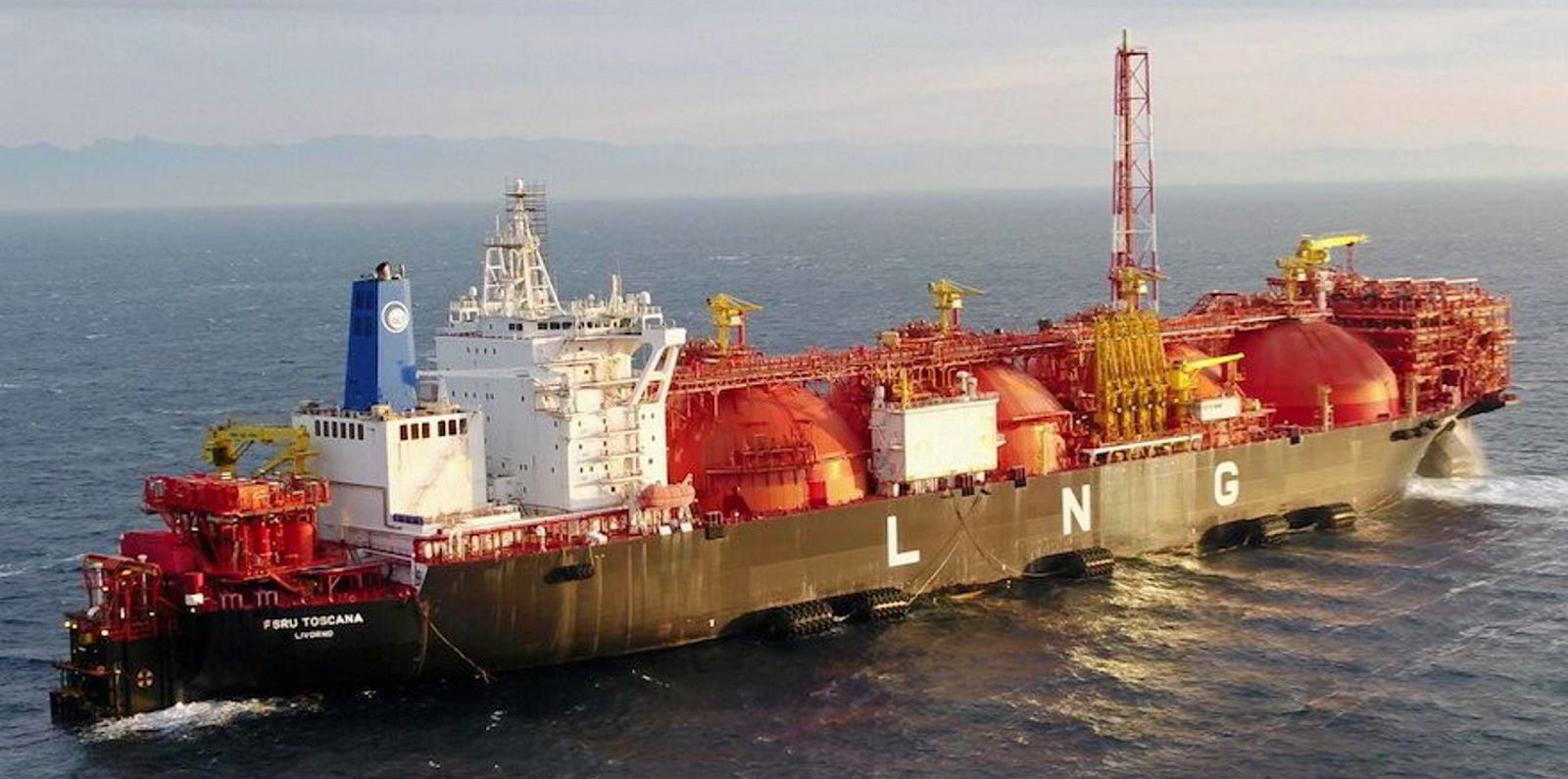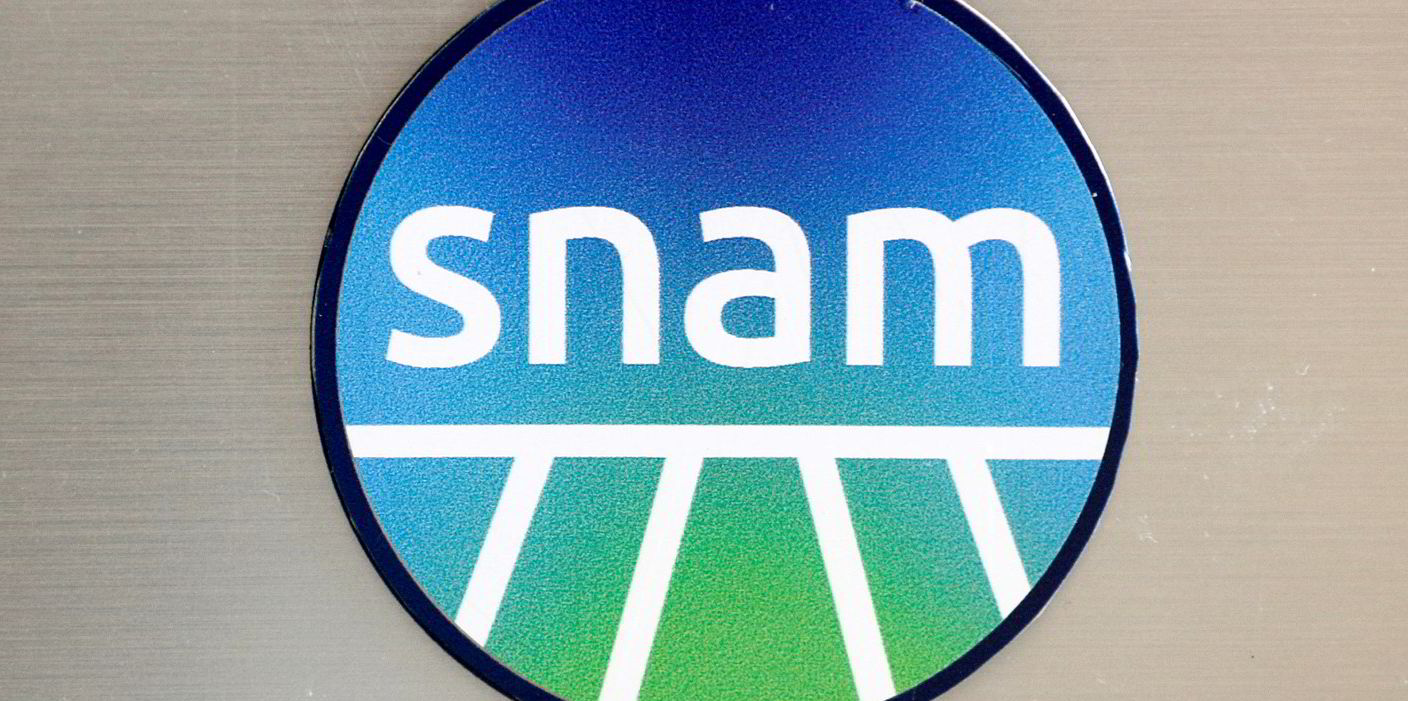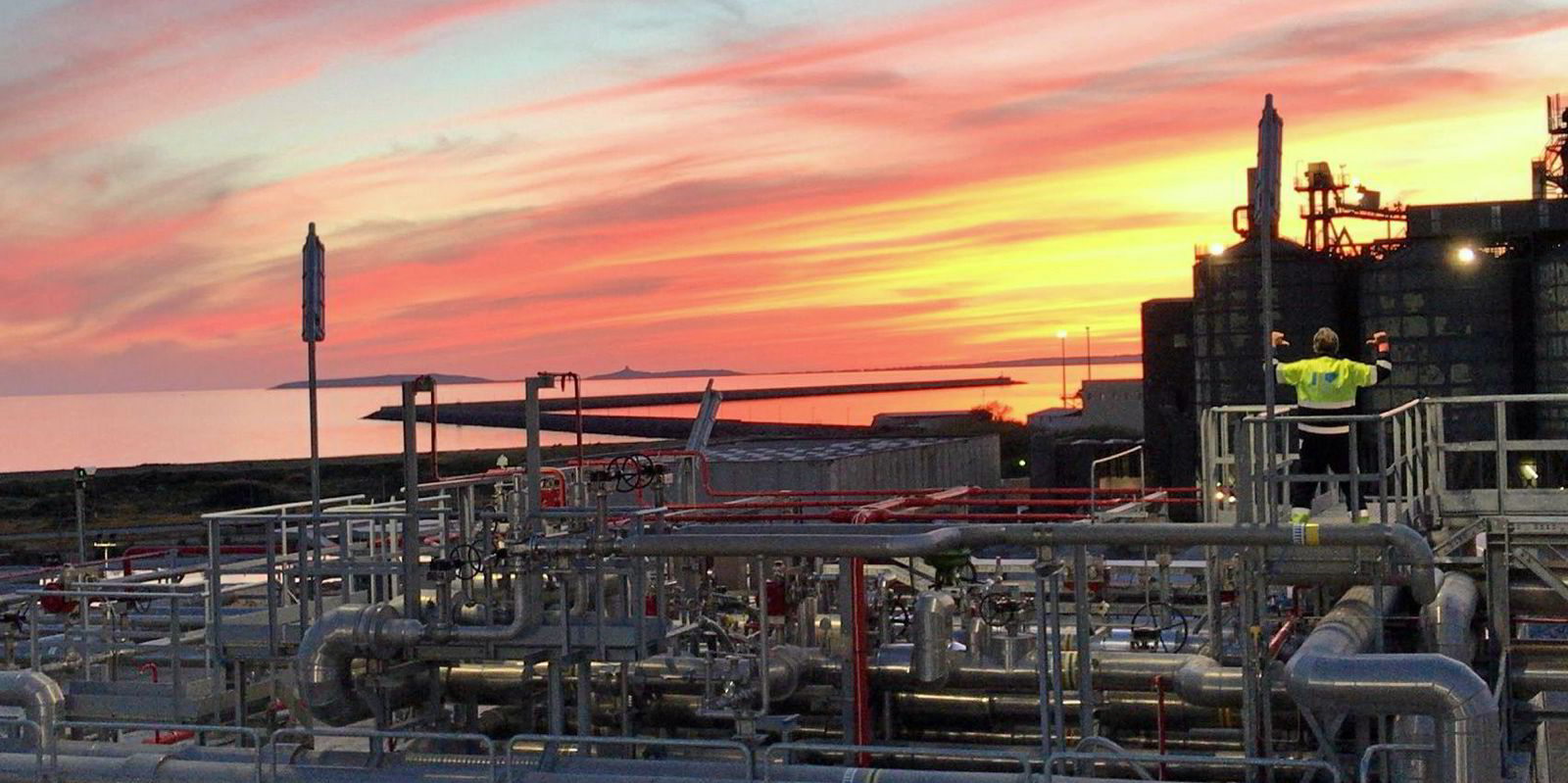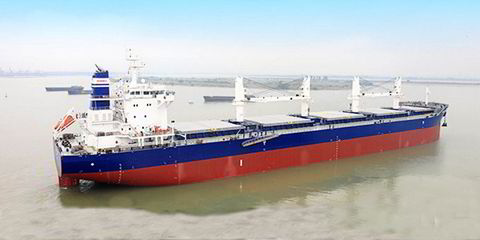A first floating storage and regasification unit has been lined up for the Italian island of Sardinia as it prepares to put a multi-vessel plan for LNG imports into play.
Snam senior vice president LNG Elio Ruggeri, who was speaking at the World LNG Summit & Awards meeting in Rome, told TradeWinds the company is ready to award a contract for the FSRU which will be located at Portovesme in the south of the island.
He said all the offers have been received following an international tender and the institutional framework must now be finalised. But he declined to comment on which vessel has been selected.
Ruggeri unveiled the overall plan to supply Sardinia with LNG.
This entails shipping in LNG from Italy's two LNG terminals — OLT Offshore Toscana's Livorno FSRU, the 137,000-cbm FSRU Toscana (built 2013) and the onshore Panagalia LNG facility.
He said LNG feeder vessels will bring the cargoes into the Portovesme FSRU or a smaller FSRU of around 25,000-cbm at Porto Torres in the north.
The VP said there is also an opportunity for an onshore import facility on the central west coast of the island at Oristano.
Tenders incoming
Ruggeri said permits for the Portovesme facility were submitted to the authorities in November.
He said tenders to acquire the LNG feeder ships would be kicked off later this year or early in 2022.
The Snam executive told this publication that the company is currently considering two vessels — one of 7,500-cbm and a second of 30,000-cbm.
Ruggeri said Snam is flexible about the FSRU for Porto Torres as there are not so many small vessels of this size available he said it could be either a vessel or a barge-based unit.
The Snam VP told the conference that today Sardinia today burns coal, LPG and fuel oil and has no access to gas.
He said that the Mediterranean island is paying high prices for its domestic and industrial paying more for energy.
The LNG import plan — also dubbed the "Sardinia virtual pipeline project" — will effectively allow the island to buy Italian gas and was deemed to be the most cost-effective way to address the energy transition in a cost-benefit study.
Ruggeri said Snam's brief was to locate its LNG assets close to the island's demand centres and to be ready for operation by 2025, to dovetail with other energy usage phase outs.
He said there was also a need for a modular solution to avoid the risk of creating a stranded asset in the future.






